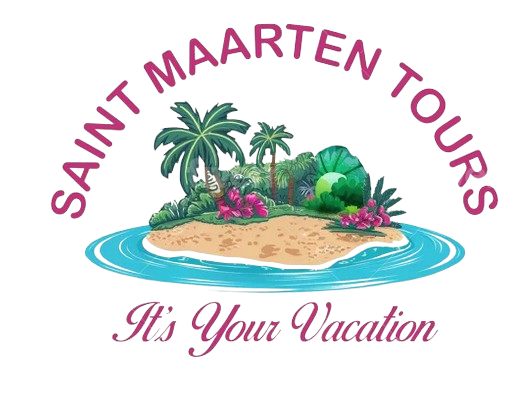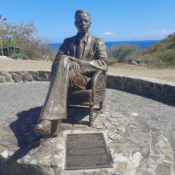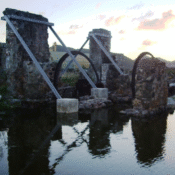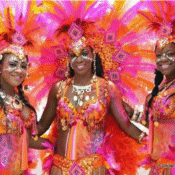The Former Salt Trade On St Maarten/ St Martin

The Former Salt Trade On St Maarten/ St Martin
The island of St. Maarten/St. Martin, located in the northeastern Caribbean Sea, boasts a rich history shaped by the complex interplay of colonial ambitions and the brutal realities of the transatlantic slave trade. This unique island, divided between French Saint-Martin and Dutch Sint Maarten, reflects a mosaic of cultural influences and historical narratives that continue to resonate today.
Early Colonial Ambitions
The European colonization of St. Maarten/St. Martin began in the early 17th century, with both the Dutch and the French establishing their presence. The Spanish, who had initially claimed the island in 1493 following Christopher Columbus’s second voyage, showed little interest in permanent settlement. However, in 1631, the Dutch West India Company erected Fort Amsterdam on the southern coast of the island, marking the beginning of serious Dutch colonial efforts. The Spanish, perceiving a threat, briefly reoccupied the island in 1633 but abandoned it by 1648 due to more pressing concerns elsewhere in their empire.
The Treaty of Concordia
The Treaty of Concordia, signed in 1648, formalized the partition of the island between the French and the Dutch, establishing a unique cohabitation that persists to this day. This division paved the way for the development of distinct colonial economies, heavily reliant on sugar plantations and the labor of enslaved Africans.
Plantations and Slave Labor
By the 18th century, St. Maarten/St. Martin’s fertile soil had become the foundation for prosperous sugar plantations, a sector dominated by the transatlantic slave trade. Enslaved Africans were forcibly brought to the island to work under grueling conditions, transforming the social and economic landscape.
Dutch Sint Maarten:
- Mary’s Fancy Plantation: One of the prominent Dutch plantations, Mary’s Fancy was known for its substantial sugar production. The plantation was owned by the Dutch West India Company before being transferred to private hands. It was a site of intense labor, with enslaved individuals enduring harsh conditions to maintain the plantation’s productivity.
- Zorg en Rust Plantation: Another significant Dutch plantation, Zorg en Rust (translated as “Care and Rest”), ironically, offered little of either to its enslaved laborers. Owned by various Dutch settlers over time, it was a testament to the brutal efficiency of the plantation economy.
French Saint-Martin:
- Loterie Farm: Originally a sugar plantation, Loterie Farm was established by French colonists in the early 18th century. It was owned by various French families who relied on the labor of enslaved Africans to cultivate sugar cane. The plantation’s name, derived from the French word “loterie” (lottery), reflects the perceived fortune in owning such lucrative land.
- Hope Estate: Located near present-day Grand Case, Hope Estate was another notable French plantation. Owned by the rich French elite, it was an epicenter of sugar production. The brutal work regime imposed on the enslaved population underscored the plantation’s profitability.
British Influence
Although the British never formally controlled St. Maarten/St. Martin, their influence was felt due to their dominance in the wider Caribbean. British merchants and smugglers often interacted with the island, participating indirectly in the local economy. The British abolition of the slave trade in 1807 and slavery in 1833 pressured other colonial powers, including the Dutch and French, to reconsider their own policies.
The Abolition of Slavery
The abolition of slavery in the mid-19th century marked a significant turning point for the island. The French abolished slavery in 1848, following the broader emancipation movement within their colonies. The Dutch followed in 1863, influenced by both internal pressures and the changing international attitudes towards slavery.
The end of slavery did not immediately transform the island’s economy or social structure. Freed individuals often continued to work on plantations, albeit under different terms, and the legacy of colonialism persisted in the socioeconomic fabric of St. Maarten/St. Martin.
Legacy and Memory
Today, the remnants of these plantations, such as restored buildings and ruins, serve as poignant reminders of the island’s complex history. Places like Loterie Farm have been repurposed into tourist attractions, blending natural beauty with historical education. Efforts to preserve and interpret this history highlight the resilience of the island’s people and their enduring quest for identity and justice.
The history of St. Maarten/St. Martin during the colonial era is a narrative of exploitation and resilience. The plantations, such as Mary’s Fancy, Zorg en Rust, Loterie Farm, and Hope Estate, were central to the island’s economic development, built on the backs of enslaved Africans. The abolition of slavery and the subsequent transformation of these plantations reflect broader themes of change and continuity that continue to shape the island’s cultural and historical landscape.
Expanded Overview of St. Maarten/St. Martin Plantations
Dutch Sint Maarten
1. Belvedere Plantation
Belvedere was one of the largest and most productive plantations on the Dutch side. Initially operated by the Dutch West India Company, it later fell into the hands of private owners. The plantation was known for its extensive sugar cane fields and also produced cotton and tobacco. The Belvedere estate was notorious for its rigorous labor conditions and played a significant role in the island’s agricultural economy.
2. Emilio Wilson Estate
Located in the Cul de Sac area, this estate, originally known as Plantation Industry and Golden Rock, was named after Emilio Wilson, a descendant of enslaved Africans. The estate is a poignant symbol of the island’s history, having transitioned from a site of exploitation to a heritage park that educates visitors about the realities of slavery and colonialism on Sint Maarten.
3. Golden Rock Plantation
Also known as Industry Plantation, Golden Rock was another significant site. It was involved in the production of sugar and other crops, and it relied heavily on enslaved labor. The plantation’s infrastructure and remnants today offer a glimpse into the island’s past.
4. Sucker Garden Plantation
This plantation was involved in sugar production and was one of the key economic drivers on the Dutch side. Its name is derived from the local term for the sugar cane ‘suckers’ used for planting.
French Saint-Martin
1. Mont Vernon Plantation
Situated on the northeastern side of the island, Mont Vernon was one of the major French plantations. It was highly productive and primarily focused on sugar cultivation. The plantation’s historical significance is underscored by its size and the number of enslaved people who toiled there.
2. Friar’s Bay Plantation
Near Friar’s Bay, this plantation was another notable French establishment. Like other plantations, it relied heavily on enslaved labor to maintain its sugar cane fields. Today, Friar’s Bay is better known for its beach, but its history remains a crucial part of the area’s heritage.
3. Colombier Plantation
Located in the lush Colombier valley, this plantation focused on sugar and coffee production. The terrain and climate were conducive to these crops, and the plantation became one of the wealthiest on the French side. The harsh realities faced by the enslaved individuals here reflect the broader exploitation seen across the island.
4. La Savane Plantation
Situated in the northern part of the island, La Savane was a significant sugar plantation. Its fields stretched across what is now a residential and commercial area. The legacy of La Savane is etched into the history of French Saint-Martin, marking the intense agricultural activities that defined the era.
The Impact of Plantations
The plantations on St. Maarten/St. Martin, whether under Dutch or French control, were integral to the island’s colonial economy. They were centers of sugar production, which was the primary economic activity, supplemented by other crops like cotton, coffee, and tobacco. The labor-intensive nature of these plantations meant that they relied heavily on the transatlantic slave trade, bringing thousands of Africans to the island under horrific conditions.
Social and Economic Structure
The plantation system entrenched a rigid social hierarchy, with European colonists at the top and enslaved Africans at the bottom. The harsh and often brutal conditions on the plantations led to numerous acts of resistance and revolts by the enslaved population, though these were often met with severe repression.
Abolition and Transition
The abolition of slavery in 1848 (French) and 1863 (Dutch) brought about significant changes but also continuity. Many freed individuals remained tied to the land through systems of sharecropping and wage labor, reflecting the persistent legacy of the plantation economy.
St. Maarten/St. Martin’s plantations is a testament to the island’s colonial past and its enduring impact. From the major plantations like Mary’s Fancy and Loterie Farm to lesser-known ones like Sucker Garden and Friar’s Bay, each played a role in shaping the island’s economic and social landscape. Today, these sites serve as important reminders of the resilience of the human spirit in the face of oppression and the ongoing journey towards recognition and reconciliation.




